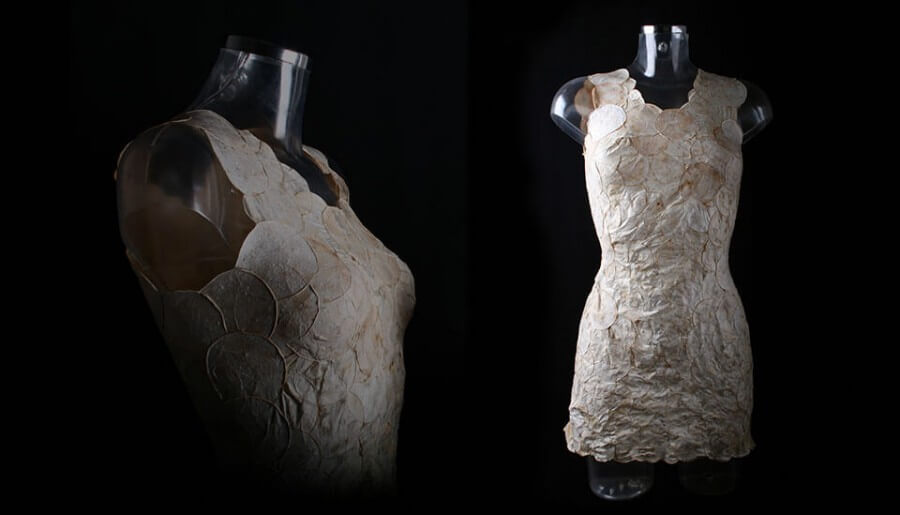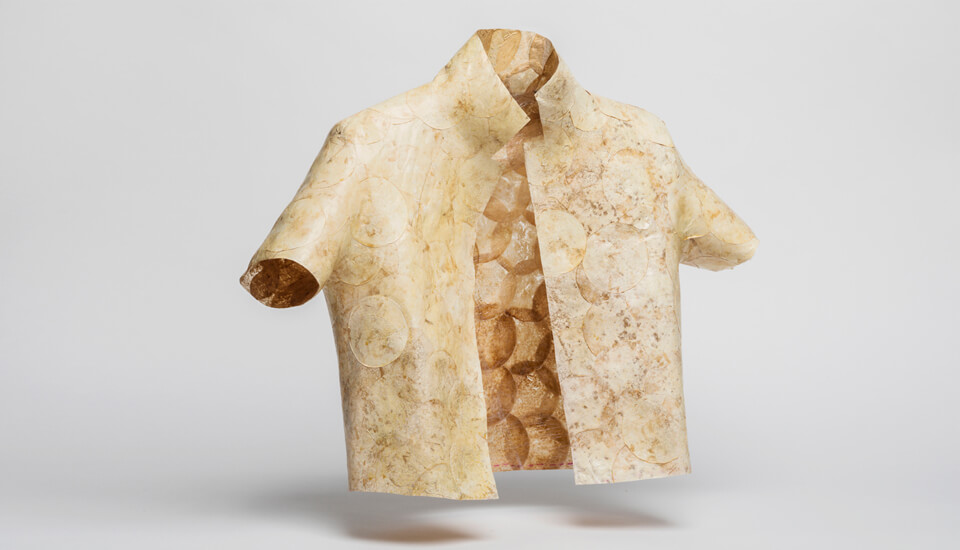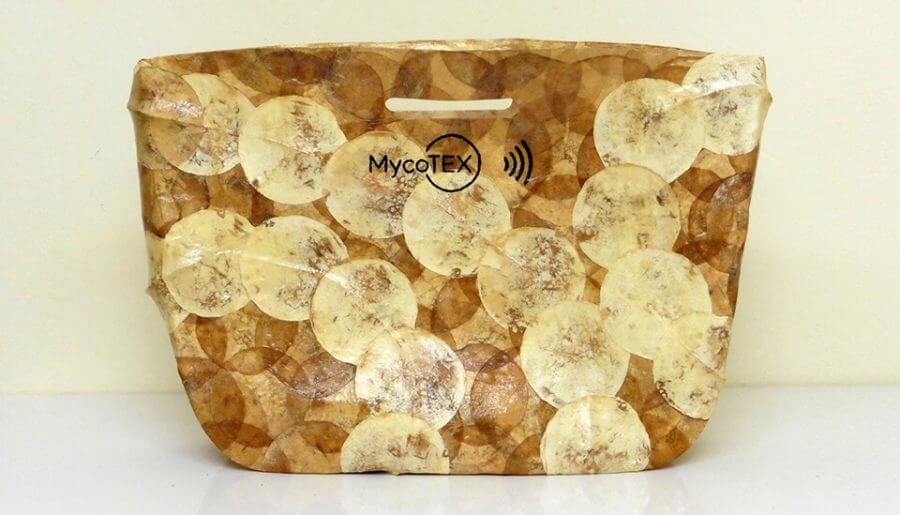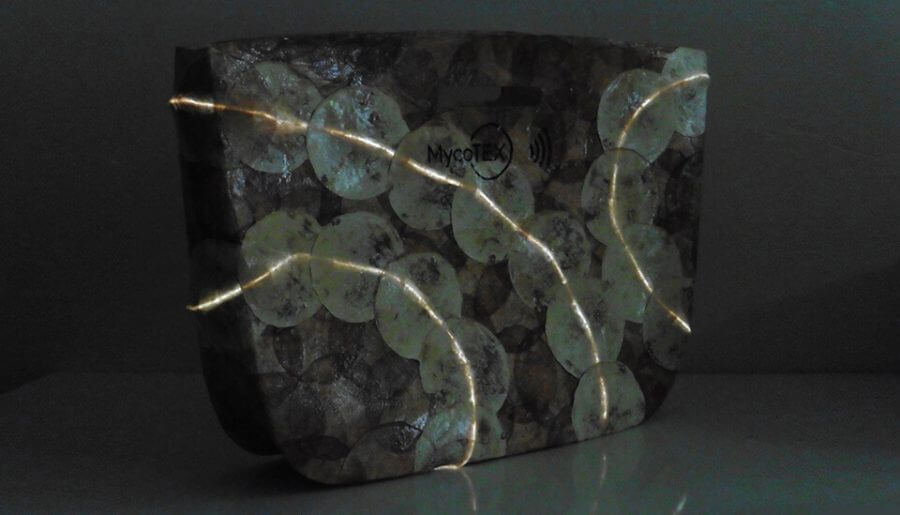project04:Case Studies
Case Studies
Mycotex
What is Mycotex?
Who designed Mycotex?
What was the goal of the design/project?
What techniques have been applied?
What fungi has been used?
What qualities can be of value for my own project?
More information.
Combined textile and mycelium growth to one in order to create flexible composites
Eventually decided to just use pure mycelium instead
Different colours but how did she do that?
Probably different substrate bases but requires further research in pure mycelium
Neffa.nl
The photos are property of the designers and can be found
Photographer, A. (year). Title of photo [Photograph]. Retrieved from http://xxxxx
Caroline de Roy - Antropomorphologies
Uses mycellium to create semi-transparant/translucent materials
Uses a manipulated species of Schizophyllum commune, ΔSC3.
Where is this material available and how can I use it?
Does it work in combination with other fungi or do they consume one another
Carolinederoy.nl
Studio Eric Klarenbeek - Veiled Lady 2.0
Uses mycellium to 3D print, He brings the 3d printing to the locations where the product has to be made and uses local raw materials
Bioplastics provide more pressure on agriculture.
Does it work in combination with other fungi or do they consume one another
The plant material produces oxygen during its life cycle, and our production process eliminates the necessity of heating materials in the printing process, thus reducing the use of energy. Adding up those two facts, combined with the use of local resources and production, it becomes possible to create products with a negative 'carbon footprint'. Instead of wasting less, we strive to absorb emission.
3d printing with aardappelzetmeel or bioplastics
Ericklarenbeek.com
Mycelium Tectonics - Mycelium Cotton composites
http://mycelium-tectonics.com/2015/04/hemp-simulation-02-analysis/ overview
http://mycelium-tectonics.com/2015/04/big-model-350mm-high-_-01/ Columns
http://mycelium-tectonics.com/2014/12/hemp-structure-walls/ wall fibers
http://mycelium-tectonics.com/2014/10/pleurotus-fiber/ fibers and mycelium
http://mycelium-tectonics.com/2014/11/hemp-structure-benchmark/
http://mycelium-tectonics.com/2014/09/in-vitro-mycotests/ tests
http://mycelium-tectonics.com/2014/09/in-vitro-mycotests-02/ tests
http://mycelium-tectonics.com/2014/10/in-vitro-petrimask/ tests
Mycelium-tectonics.com
Jonas Edvard - Mycelium Fiber composites
Scientific research has shown that fungi can degrade toxic and persistent waste materials such as plastics, converting them into edible fungal biomass. LIVIN Studio started working with fungi, such as Schizophyllum commune and Pleurotus ostreatus. As fungi break down the plastic ingredients without storing them in their bodies, like they do with (heavy) metals, they can be edible.
LivingStudio.com
Mycelium Textile - Mycelium Shoes
‘Growing Shoes’ shows the results of experiments in Mycelium to see how shoes can be shaped into solid and hollow models. Solid shapes function as heels, platforms and insoles of the shoe. In order to achieve these shapes, different waste streams such as coffee grounds and sawdust are used as substrates. The hollow shapes are grown pure in bottles or on fibers such as hemp and psyllium to achieve strength and structures. After harvesting, the pure Mycelium becomes a clay looking white material is then used to cover some parts of the heels or moulded onto the lasts.
http://shoedesigner.be/project/210/
http://shoedesigner.be/project/growing-shoes/
http://shoedesigner.be/project/sportive-vegan/
Jonasedvard.dk
Mycelium Textile - Mycelium Shoes
Mycelium has the natural ability to fuse together smaller pieces of organic material into a greater whole, with analogous qualities to petroleum based open and closed cell foam. Artefacts that are made from living mycelium will bind together in as short as one day if placed in contact with one another, forming an organic weld that permanently joins two objects together.
http://www.fungal-futures.com/Polyominoes-Maritime-Fungi
Mycoworks.com



